Though it sounds like I am whining about having to have to deal with drainage issues, I actually really love the complex challenges that they offer and how they challenge my design and engineering skills.
Because every project is different in its topography, soil profile, budget and functional needs we have used a wide variety of drainage solutions in solving various drainage problems.
Bio -swales have been employed quite a bit when working on down hill slopes to slow surface run off, aid in erosion control and direct water where it is needed.
Below are a couple of projects where swales were use in modest sized residential projects.
A number of switch back swales were used on this Marin County hillside to control surface run off. A series of underground 6 inch diameter drain pipes were used behind stone walls with foundations to take off the hydrostatic stress and re-route the subsurface water to a natural water course at the outer edge of the property.
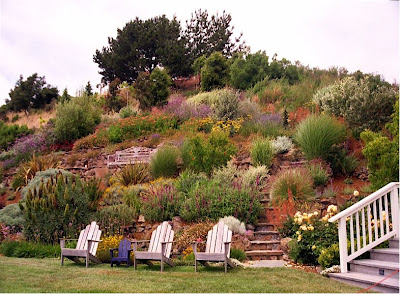
Another project where on contour swales were used to slow down the velocity of surface water runoff and erosion
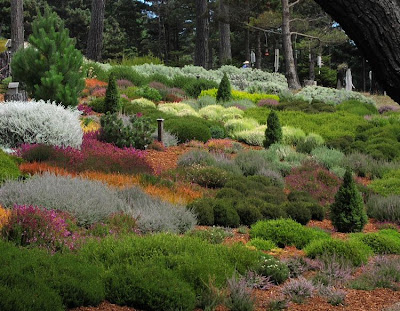
This project as you can see from the before photo had a lot of issues to overcome.
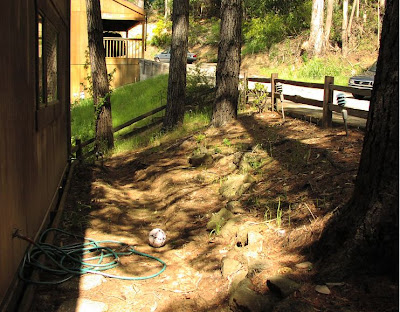
After
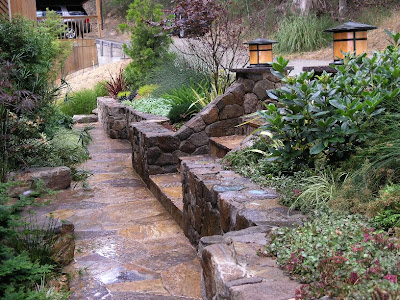
The private street that services this small neighborhood has only one street drain inlet and it is almost always non functional because of the dense eucalyptus leaf litter that plugs it up.
Before our landscape renovation, the front yard would take on huge amounts of rain water and silt , right up and into their front door.
We solved this drainage problem with a variety of drainage solutions including improving the street drainage with a channel drain, installing subsurface 6 inch and 4 inch diameter perf and solid pipe, adding a updated french drain system and directing excess subsurface and surface water over to the side hillside and sculpting the topography to slow down the surface erosion and runoff and directing excessive subsurface overflow to a city installed 2 foot diameter open drainage culvert.
This is one of the highest rainfall areas in Northern California. When it rains everywhere else , it is pouring here.
The next project was a great challenge, one that I was extremely grateful that I had a fantastic soils and drainage engineer to collaborate with.
When I looked at this building site with the owner back in July of 97 there was almost 2 feet of sitting water in the far back corner of the property.
This was alarming considering that we had not received any measurable rainfall for the past 2-3 previous months.
The property is a drain sink. It sits squarely at the bottom toe of several converging mountains. It is also surrounded on all three sides by neighbouring homes .
Together we designed a series of giant drainage fields under the gravel paths.
If was calculated by the drainage engineer that each drain field needed to be 7 feet deep and 3 feet wide to handle the amount of water that was received each rainy season.
The central rose garden surrounded by the paths and a sitting area is designed to wick up the overflow drainage water . It works on the same theory system as a rain garden.
winter view

spring view

view from terrace above down to sitting area that uses the canopy of 4 olive trees to provide a sense of room and shade. - over looks into the rose garden.

same view different season
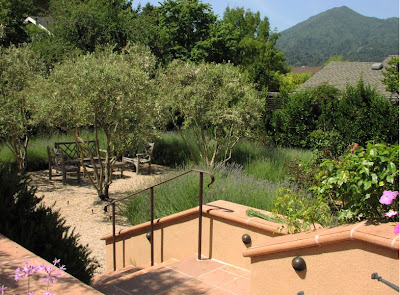
Central rose garden / rain garden - receives subsurface runoff
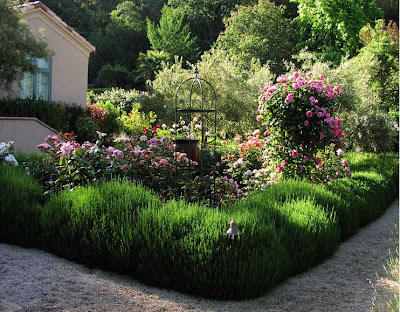
sitting area

This newly developed suburban neighborhood was poorly graded by the developers.
Our clients property took on the surrounding drainage from 5 adjoining properties.
We used drainage swales, subsurface drain pipes and a series of extending sub surface perf pipe to redistribute the water within our clients property in order to comply with city ordinance but also to effectively spread the water out evenly over a period of time .
Only when the system hits its point of refusal does the excessive subsurface drain water fall into a secondary swale system that is maintained by the city.

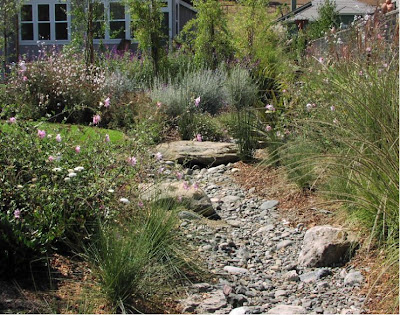
This a last project was build in Napa Valley.
The portion of this project is rather small in comparison to the rest of the project that was installed but is represents some good examples of drainage work using on contours swales, retention basins , and sub surface piping work.
I’ll let the photos tell most of the story but to give you a sense of scale, those are 60 to 80 year old olive trees that were planted that had root balls of approximately 12 to 14 round and 3 to 4 feet thick. - Only two could be loaded onto to a large size flat bed.
There were 27 of them installed across a very steep hill that had to comply with wetland restoration ordinances as well as vineyard installation ordinances. Lots and lots of legal paper work, planning commissions and oversight review boards to work with.

The flat bed delivering two olive trees at the bottom of the entry drive.
On contour swales can be seen traversing across hill.
Perf and solid 4 inch pipe is drainage leading out from the planting holes from the olive trees into a lower swale.
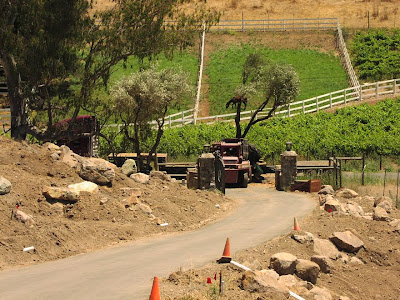
Photo taken from the vineyard beyond. Wetland in the foreground, hill stabilization in the midground with native grass seed sprouting between erosion jute. On this down hill slope not too much on contour swales were used as there were on the upper hillside.
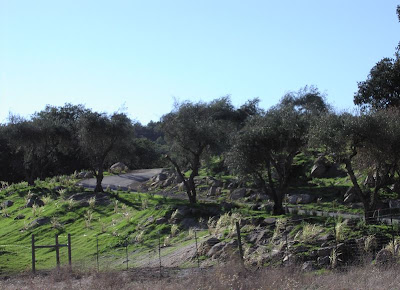
View the end of the first summer looking up the driveway.
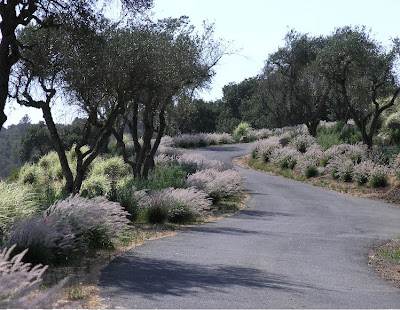
Olives, Salvia leucantha, Miscanthus sinensis variegata and Pennesetum .
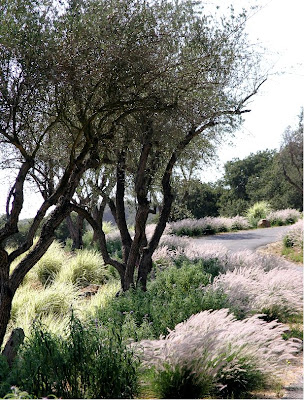







4 comments:
I love how you transformed the area in pics 3 and 4.
Glory! what challenges!! And, what gorgeous final results. Congratulations!
I found you on Blotanical and came over to read awhile. Didn't expect such a wonderful website. I'm enjoying it very much. Now, where was I?
thanks for dropping in !
nice garden.
You may also need some slope erosion control or synthetic drainage products like written in below website
www.geosyntheticsworld.com
Post a Comment